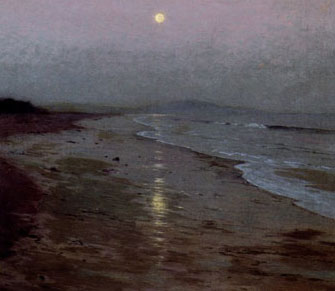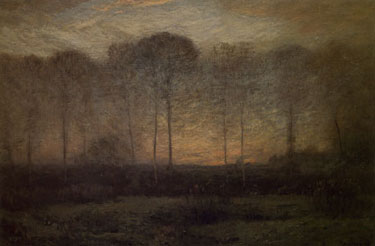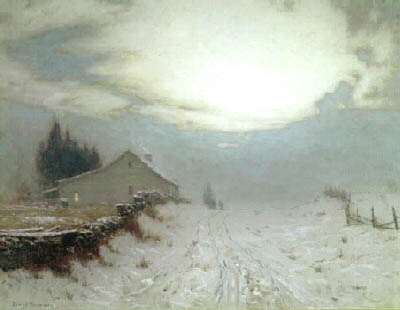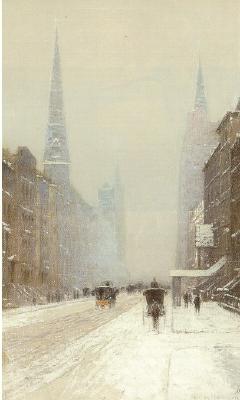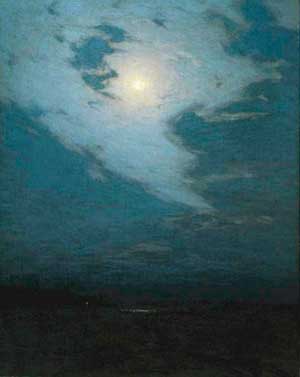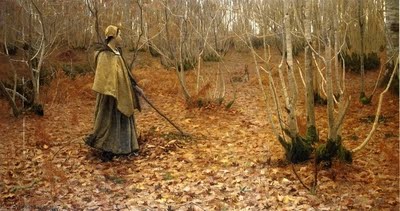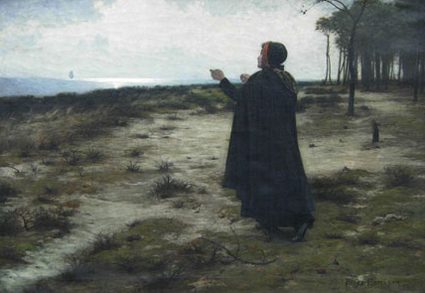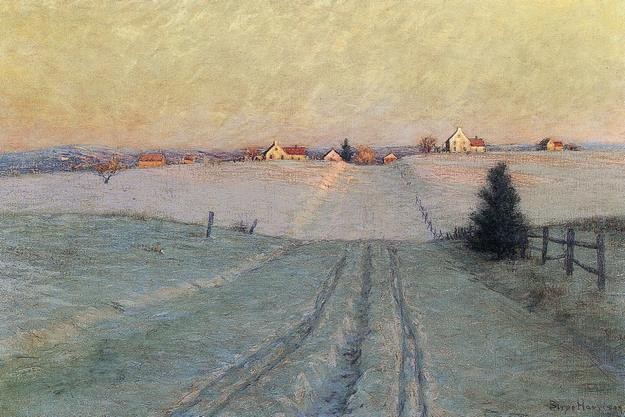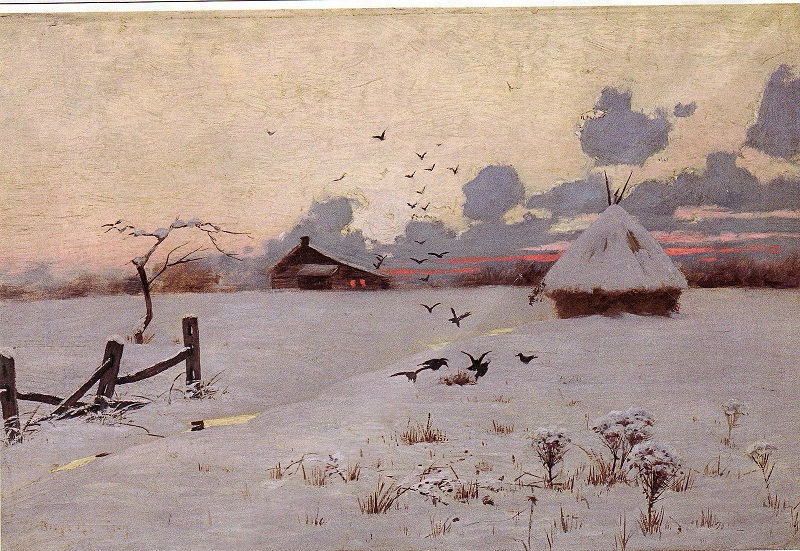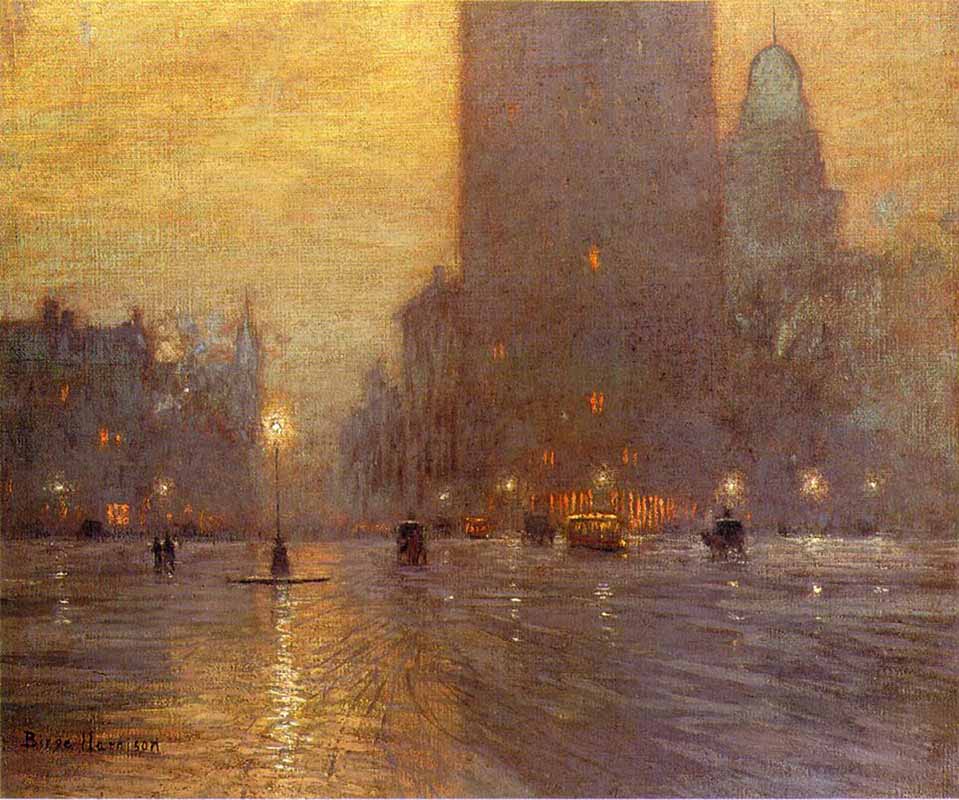<Back to Index>
- Painter Thomas Alexander Harrison, 1853
- Painter Lovell Birge Harrison, 1854
PAGE SPONSOR
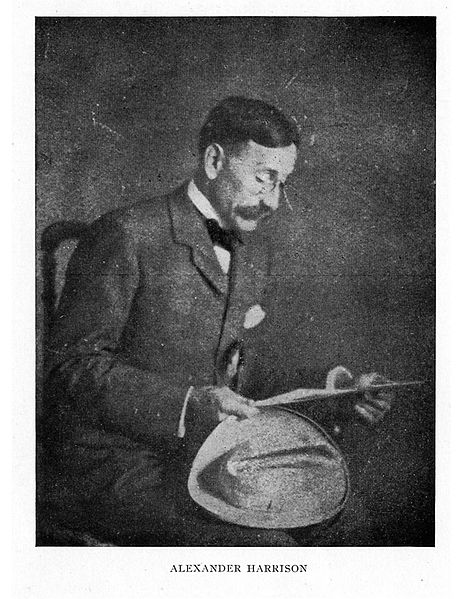
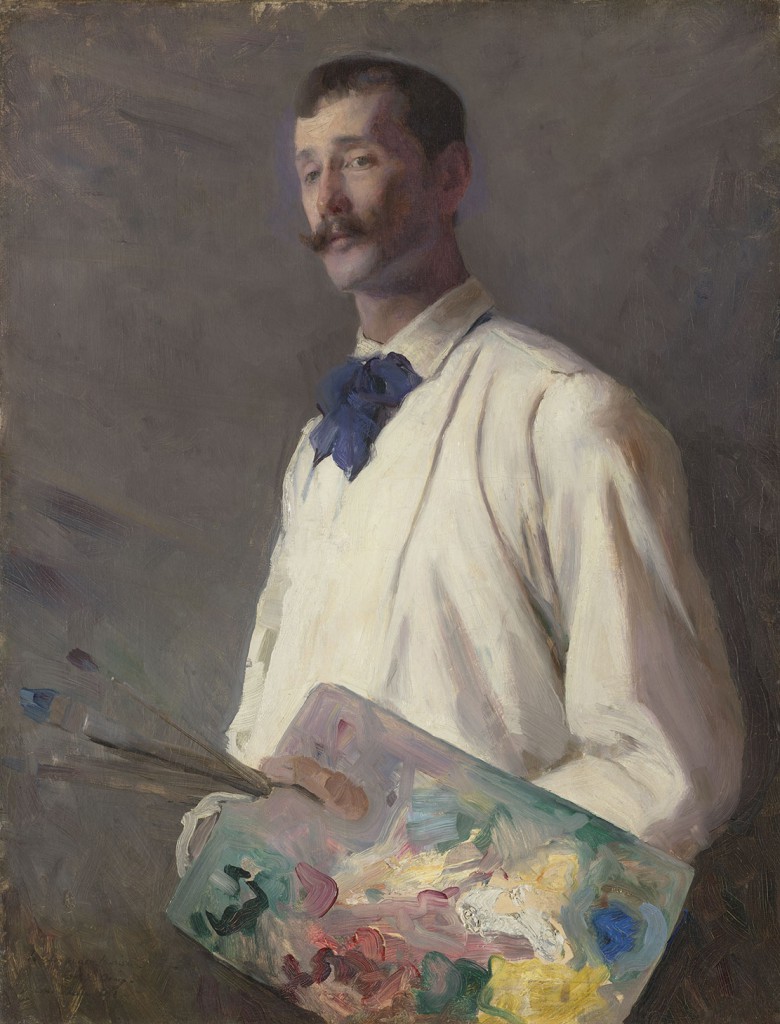
Thomas Alexander Harrison (January 17, 1853, Philadelphia, Pennsylvania – October 13, 1930), was an American marine painter who spent much of his career in France.
He studied at the Pennsylvania Academy of Fine Arts in Philadelphia, then joined a United States government survey expedition on the Pacific coast. Beginning in 1878, he studied at the École nationale supérieure des Beaux - Arts in Paris under Jean - Leon Gerome and Jules Bastien - Lepage.
Chafing under the restraints of the schools, he traveled to Brittany, where at Pont - Aven and Concarneau he turned his attention to marine painting and landscape.
A figure piece he sent to the 1882 Salon attracted attention, a boy daydreaming on the beach, which he called Châteaux en Espagne (Castles in Spain) (1882, Metropolitan Museum of Art). In the 1885 Salon, he had a large canvas of several nude women called En Arcadie (1885, Musée d'Orsay), a remarkable study of flesh tones in light and shade which had a strong influence on the younger men of the day. This received an honorable mention, the first of many awards conferred upon him. Others included the 1887 Temple Gold Medal of the Pennsylvania Academy of Fine Arts, a first medal at the 1889 Paris Exhibition, and medals in Munich, Brussels, Ghent, Vienna and elsewhere.
He became a member of the Legion of Honor and officier of Public Instruction, Paris; a member of the Société Nationale des Beaux - Arts, Paris; of the Royal Institute of Painters in Oil Colours, London; of the Secession societies of Munich, Vienna and Berlin; of the National Academy of Design, the Society of American Artists, New York, and other art bodies.
His reputation rests on marine pictures such as The Wave (1885, Pennsylvania Academy of the Fine Arts), with long waves rolling in on the beach, and great stretches of open sea under poetic conditions of light and color.
Harrison rented a ramshackle cottage near the Brittany town of Beg - Meil, and each evening raced to the dunes to watch the sun set over the ocean. In late summer 1896, he was joined there by struggling writer Marcel Proust and composer Reynaldo Hahn. He opened their eyes to how light plays on water:
"We have seen the sea successively turn blood red, purple, nacreous with silver, gold, white, emerald green, and yesterday we were dazzled by an entirely pink sea specked with blue sails."
Hahn is considered the inspiration for the title character in Proust's attempted first novel Jean Santeuil, but another character, "C", seems to be based on Harrison, along with aspects of the character Elstir, the painter in Remembrance of Things Past.
His brother, L. Birge Harrison (1854 – 1929), also a painter, particularly successful in snow scenes, was a pupil of the École des Beaux - Arts, Paris, under Cabanel and Carolus - Duran; his November (honorable mention, 1882) was purchased by the French government. Another brother, Butler Harrison (died 1886), was a figure painter.
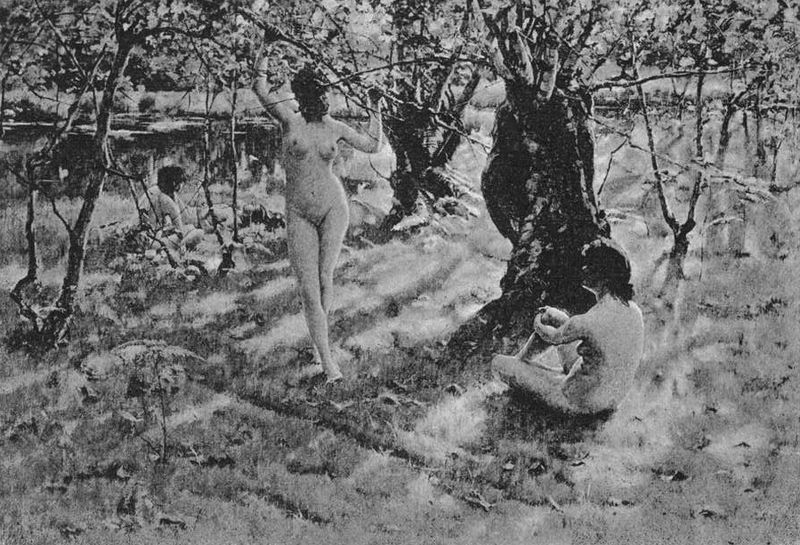
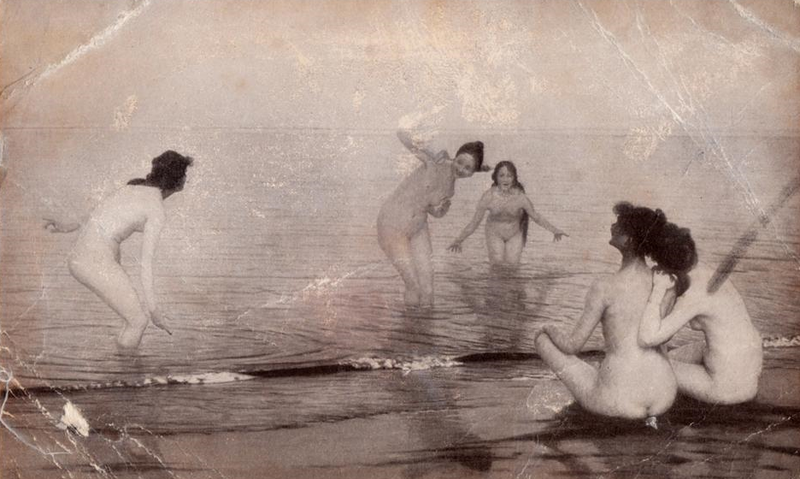
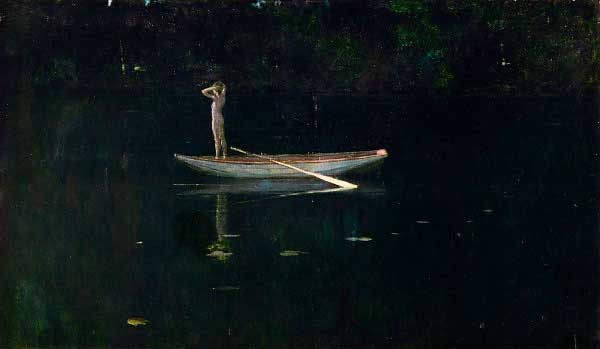
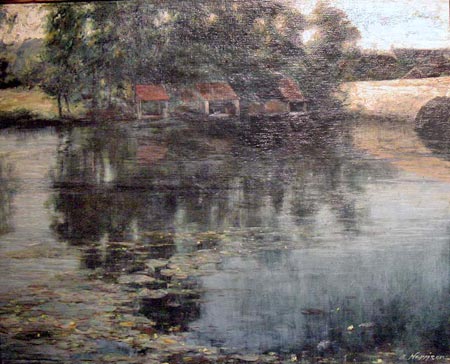
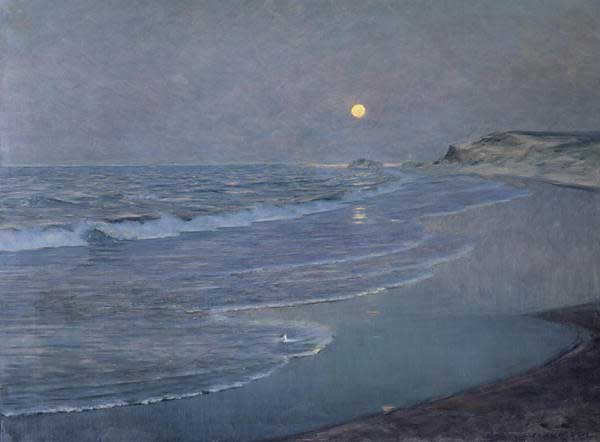
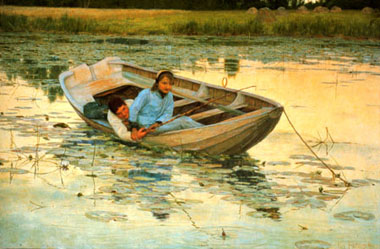
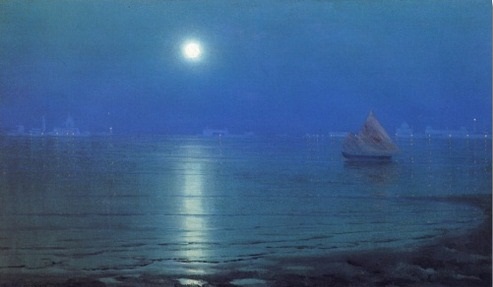
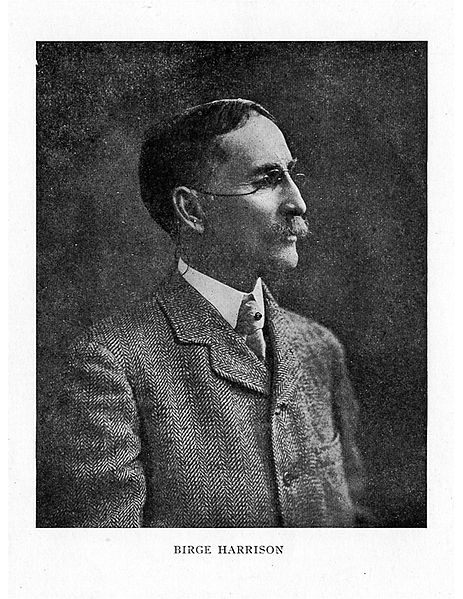
Lovell Birge Harrison (October 28, 1854, Philadelphia, Pennsylvania – 1929) was an American genre and landscape painter, teacher and writer. He was a prominent practitioner and advocate of Tonalism.
Born in Philadelphia, Birge Harrison was the brother of artist T. Alexander Harrison. He studied first at the Pennsylvania Academy of the Fine Arts in 1874, and later credited Thomas Eakins as a positive influence on his own teaching style. He then went to Paris on the advice of John Singer Sargent to study with Carolus - Duran and at the École des Beaux - Arts under Cabanel. In 1881 Harrison exhibited at the Paris Salon, and in 1882 his Salon entry, Novembre, became one of the first paintings by an American artist to be purchased by the French government. Discussing the painting years later Harrison attributed its handling to "A Scandinavian painter (who) had shown me the secret of atmospheric painting.... and.... the importance of vibration and refraction in landscape painting." The paintings of this period included peasant subjects that showed the influence of Jules Bastien - Lepage. The limited palette and wistful mood of the early works would continue to be distinguishing features of Harrison's later landscape paintings.
Harrison met the Australian painter Eleanor Ritchie in the course of his summer landscape travels; they married and returned to America, where he began to exhibit annually at the National Academy of Design, and after 1889 at the Pennsylvania Academy of the Fine Arts. Temporarily forced to stop painting on account of ill health, he spent considerable time between 1889 and 1893 traveling in Australia, the South Seas and New Mexico, and wrote and illustrated articles for publication. In 1891 Harrison and his wife moved to California, but after her death in 1895 while expecting their first child, Harrison remarried and moved to Plymouth, Massachusetts, where he became a leader of the Tonalist school. He then relocated again, this time to Woodstock, New York, at the turn of the century where he founded a school based on his experiments in Tonalism. In 1906 Harrison helped found the Art Students League Summer School in Woodstock. He became known especially for his paintings of landscapes in the snow.
Harrison received numerous prizes and medals, including the gold medal at the Pennsylvania Academy of the Fine Arts in 1910. He became a member of the National Academy of Design in 1910, National Institute of Arts and Letters, New York Water Color Club, Society of American Artists, and was director of the landscape school of the Art Students League.
In 1909 Harrison's lectures were published in a book entitled Landscape Painting; the book was cited as "a standard work for students, and was referred to as "a fine commentary on the technique of the craft." According to art historian William H. Gerdts, Harrison was then "the leading writer in America on contemporary landscape painting." Harrisons's writing reveals an interest in the retinal perception of color, and in tonal harmony; he believed that the term Impressionism was descriptive not merely of the recent movement in French painting, but referred to any work done "honestly and sincerely" before nature. Harrison's painting exemplified the lessons he taught, emphasizing the practice of open air observation rather than technical facility.
